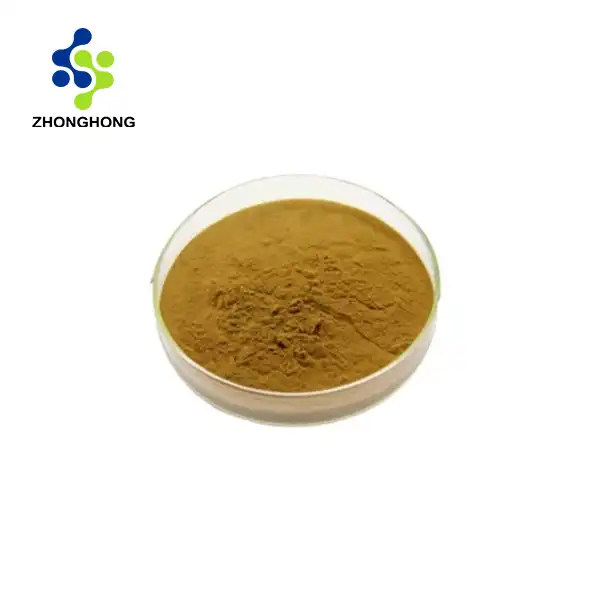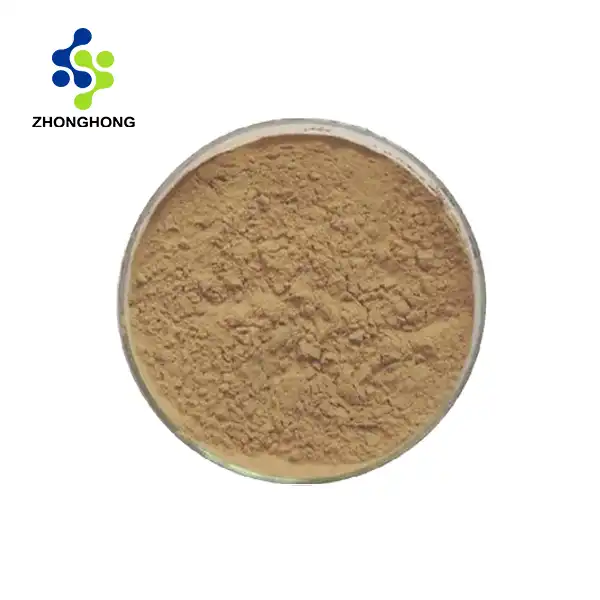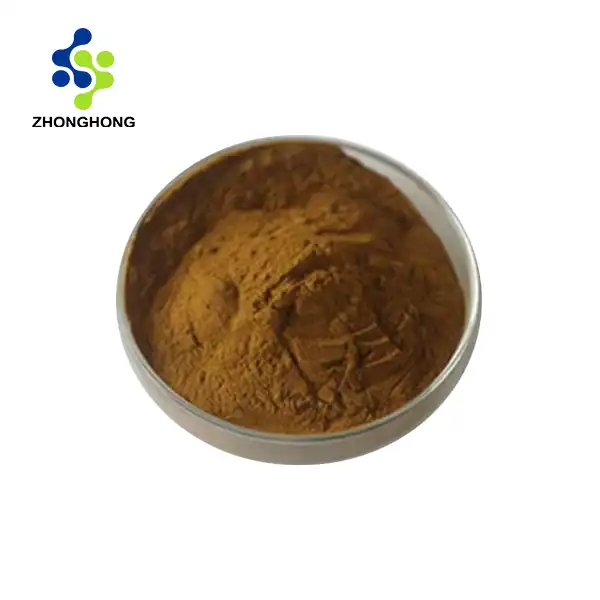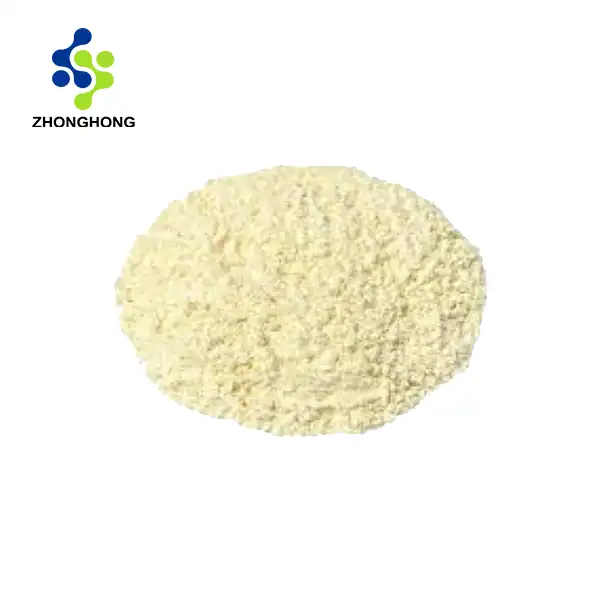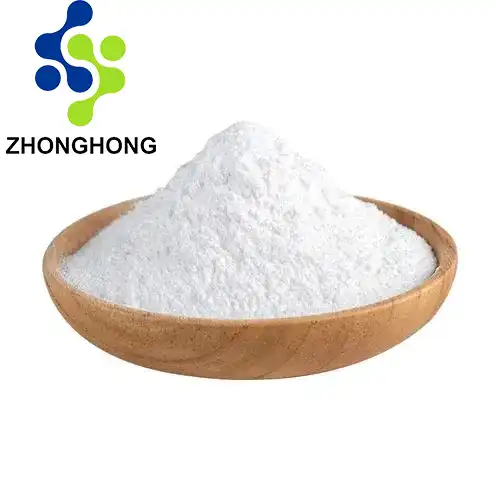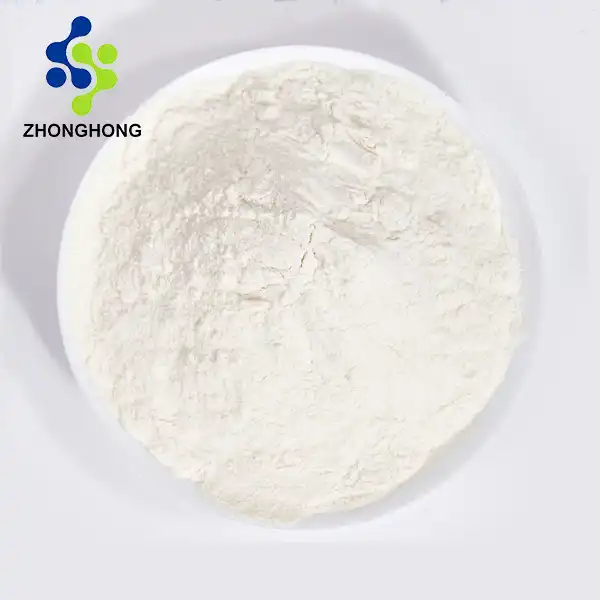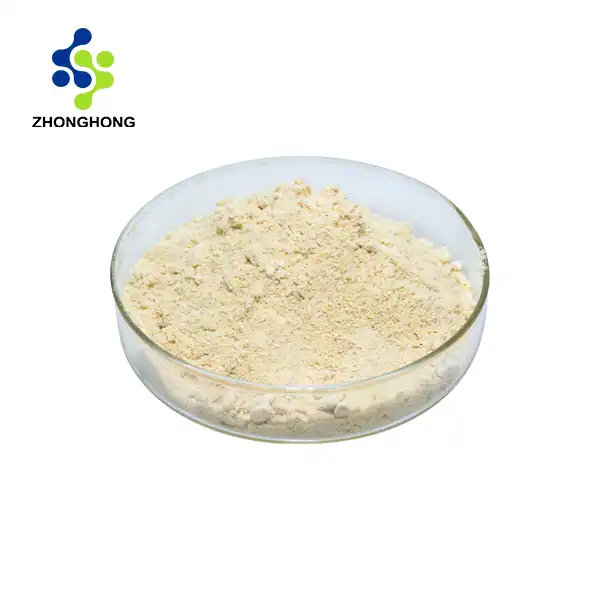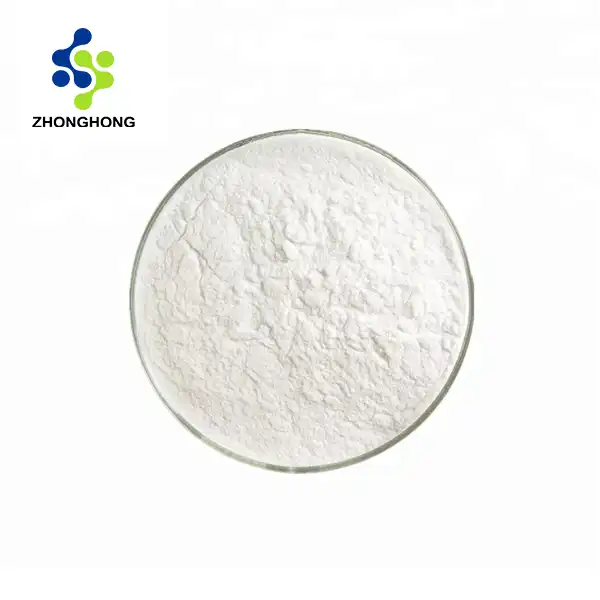How to activate kojic acid powder?
2024-11-15 21:04:50
Activating kojic acid powder is a crucial step in harnessing its full potential for various applications in biotechnology, pharmaceuticals, food, and cosmetics industries. The process involves carefully dissolving the powder in a suitable medium while maintaining optimal conditions for its stability and efficacy. To activate kojic acid powder, start by selecting an appropriate solvent such as distilled water, ethanol, or propylene glycol, depending on your specific application. Next, gradually add the kojic acid powder to the solvent while stirring gently to ensure even distribution. It's essential to maintain a pH level between 3 and 5 during the activation process, as kojic acid is most stable in slightly acidic conditions. Heating the solution to around 40-50°C (104-122°F) can help improve solubility, but be cautious not to exceed 60°C (140°F) to prevent degradation. Once fully dissolved, allow the solution to cool to room temperature before use. For enhanced stability, consider adding antioxidants like vitamin C or E. Remember that the activated kojic acid solution should be stored in a dark, cool place and used within a specified timeframe to maintain its potency.
Understanding Kojic Acid Powder Properties
Chemical Structure and Stability
Kojic acid powder, a natural compound derived from various fungi species, possesses a unique chemical structure that contributes to its versatile applications. The molecular formula C6H6O4 represents its composition, featuring a cyclic structure with hydroxyl and carbonyl groups. These functional groups play a crucial role in its ability to inhibit tyrosinase, the enzyme responsible for melanin production. However, the stability of kojic acid can be influenced by various factors, including pH, temperature, and exposure to light. Understanding these properties is essential for effective activation and utilization in different industries.
Solubility Characteristics
The solubility of kojic acid powder is a critical factor in its activation process. It exhibits moderate solubility in water, with increased solubility in polar organic solvents such as ethanol and propylene glycol. The solubility profile varies depending on temperature and pH conditions. At room temperature, kojic acid displays a solubility of approximately 3.95 g/100 mL in water, which can be enhanced by slight heating. However, it's important to note that excessive heat can lead to degradation, affecting the compound's efficacy. Optimizing the solubility conditions is crucial for achieving a well-activated kojic acid solution suitable for various applications.
Optimal Storage Conditions
Proper storage of kojic acid powder is paramount to maintaining its stability and effectiveness. The compound is sensitive to light, heat, and moisture, which can accelerate its degradation. To preserve its quality, store kojic acid powder in airtight, opaque containers away from direct sunlight. Maintaining a cool temperature, preferably between 2-8°C (35.6-46.4°F), can significantly extend its shelf life. Additionally, minimizing exposure to air and humidity is crucial, as these factors can promote oxidation and hydrolysis of the compound. By adhering to these storage guidelines, you can ensure the longevity and potency of your kojic acid powder, facilitating optimal activation when needed.
Activation Methods for Different Applications
Biotechnology Research Protocols
In biotechnology research, activating kojic acid powder requires precision and adherence to stringent protocols. Researchers often employ a buffer-based activation method to maintain consistent pH levels crucial for experimental validity. A common approach involves preparing a stock solution by dissolving kojic acid powder in a phosphate buffer (pH 5.0-6.0) at a concentration of 10-20 mg/mL. This solution can then be further diluted to achieve desired concentrations for specific assays or cell culture experiments. It's imperative to use sterile techniques and filter the activated solution through a 0.22 μm membrane to ensure purity for sensitive biological applications. Some protocols may incorporate antioxidants like ascorbic acid to enhance stability during prolonged studies. Biotechnology companies focusing on enzyme inhibition studies or melanin synthesis research find this activation method particularly valuable for maintaining the biological activity of kojic acid.
Pharmaceutical Formulation Techniques
Pharmaceutical companies employ specialized techniques to activate kojic acid powder for drug formulations. One prevalent method involves creating a kojic acid-cyclodextrin complex to enhance solubility and stability. This process typically begins by preparing an aqueous solution of β-cyclodextrin (7-10% w/v) and gradually adding kojic acid powder while maintaining a temperature of 40-45°C (104-113°F). The mixture is then stirred continuously for several hours to ensure complete complexation. After cooling, the solution can be lyophilized to obtain a stable, easily reconstitutable powder. Another approach for topical formulations involves dissolving kojic acid in a blend of propylene glycol and ethanol (1:1 ratio) to achieve a concentration of 1-2% w/w. This activated solution can then be incorporated into creams, gels, or lotions. Pharmaceutical grade kojic acid activation often requires validation through stability studies and bioavailability assessments to ensure product efficacy and safety.
Food Industry Applications
In the food industry, activating kojic acid powder for use as a natural preservative or flavor enhancer requires methods that comply with food safety regulations. A common activation technique involves creating a water-based solution at a concentration of 0.05-0.1% w/v. To achieve this, kojic acid powder is gradually added to purified water while stirring at room temperature. For enhanced solubility and stability in acidic food products, the solution's pH can be adjusted to 4.0-4.5 using food-grade citric acid. Some food manufacturers opt for a microencapsulation technique to activate and protect kojic acid. This process involves creating an emulsion of kojic acid solution in a food-grade carrier oil, followed by spray-drying to produce a powder form that can be easily incorporated into various food products. It's crucial to note that the use of kojic acid in food applications is subject to regulatory limits, and proper activation methods must ensure that these limits are not exceeded in the final product.
Quality Control and Safety Measures
Purity Assessment Techniques
Ensuring the purity of activated kojic acid is paramount for its efficacy and safety across various applications. High-performance liquid chromatography (HPLC) stands out as a preferred method for purity assessment, offering precise quantification of kojic acid content and detection of potential impurities. A typical HPLC protocol utilizes a C18 column with a mobile phase consisting of methanol and water, often with a phosphate buffer to maintain pH stability. UV detection at 280 nm provides sensitive and specific analysis. Complementary techniques such as nuclear magnetic resonance (NMR) spectroscopy can offer structural confirmation, while mass spectrometry enables the identification of trace contaminants. For rapid screening, thin-layer chromatography (TLC) using silica gel plates and a solvent system of ethyl acetate:methanol:water (100:13.5:10) can be employed. These analytical methods not only verify the purity of the activated kojic acid but also ensure batch-to-batch consistency, a critical factor for regulatory compliance and product reliability.
Stability Testing Protocols
Stability testing is crucial to determine the shelf life and optimal storage conditions of activated kojic acid solutions. A comprehensive stability testing protocol typically involves subjecting the activated product to various environmental stressors over time. Accelerated stability studies expose the solution to elevated temperatures (40°C/75% RH) for 6 months, while long-term studies at room temperature (25°C/60% RH) may extend up to 24 months or longer. During these periods, samples are analyzed at predetermined intervals for changes in physical appearance, pH, and kojic acid concentration. Photostability testing, conducted under controlled light exposure conditions, assesses the product's sensitivity to light. For cosmetic and pharmaceutical applications, microbial challenge tests are performed to ensure preservative efficacy. Additionally, freeze-thaw cycle tests evaluate the stability of the activated kojic acid under temperature fluctuations. These comprehensive stability assessments not only guide proper storage and handling recommendations but also inform formulation improvements to enhance product longevity and efficacy.
Safety Precautions and Handling Guidelines
Proper handling of kojic acid powder and its activated solutions is essential to ensure safety in laboratory and industrial settings. Personal protective equipment (PPE) including gloves, safety goggles, and lab coats should be worn when handling kojic acid. Due to its potential for skin irritation, direct contact should be avoided, and any spills should be promptly cleaned using appropriate absorbent materials. When activating kojic acid powder, it's crucial to work in a well-ventilated area or under a fume hood to minimize inhalation risks. For large-scale industrial activation, closed systems with proper ventilation controls are recommended. Storage of activated kojic acid solutions should be in tightly sealed, light-resistant containers, preferably under nitrogen atmosphere to prevent oxidation. Regular safety training for personnel involved in kojic acid handling is essential, covering topics such as proper disposal methods, emergency procedures, and the importance of maintaining accurate safety data sheets (SDS). Implementing these safety measures not only protects workers but also ensures the quality and integrity of the activated kojic acid products.
Conclusion
Activating kojic acid powder is a nuanced process that requires careful consideration of various factors including solubility, pH, temperature, and intended application. By understanding its properties and following appropriate activation methods, industries can harness the full potential of kojic acid for diverse uses in biotechnology, pharmaceuticals, food, and cosmetics. Proper quality control, stability testing, and safety measures are essential for ensuring the efficacy and safety of activated kojic acid products. As research continues to uncover new applications for this versatile compound, refining activation techniques will remain crucial for innovation across multiple sectors. If you want to get more information about this product, you can contact us at liaodaohai@gmail.com.
References
1. Chang, T. S. (2009). An updated review of tyrosinase inhibitors. International Journal of Molecular Sciences, 10(6), 2440-2475.
2. Saeedi, M., Eslamifar, M., & Khezri, K. (2019). Kojic acid applications in cosmetic and pharmaceutical preparations. Biomedicine & Pharmacotherapy, 110, 582-593.
3. Burnett, C. L., Bergfeld, W. F., Belsito, D. V., Hill, R. A., Klaassen, C. D., Liebler, D. C., ... & Andersen, F. A. (2010). Final report of the safety assessment of kojic acid as used in cosmetics. International Journal of Toxicology, 29(4 Suppl), 244S-273S.
4. Saruno, R., Kato, F., & Ikeno, T. (1979). Kojic acid, a tyrosinase inhibitor from Aspergillus albus. Agricultural and Biological Chemistry, 43(6), 1337-1338.
5. Mitani, H., Koshiishi, I., Sumita, T., & Imanari, T. (2001). Prevention of the photodamage in the hairless mouse dorsal skin by kojic acid as an iron chelator. European Journal of Pharmacology, 411(1-2), 169-174.
6. Brtko, J., Rondahl, L., Ficková, M., Hudecová, D., Eybl, V., & Uher, M. (2004). Kojic acid and its derivatives: History and present state of art. Central European Journal of Public Health, 12, S16-S18.
_1728976869676.webp)
